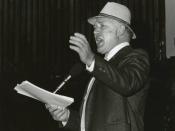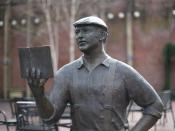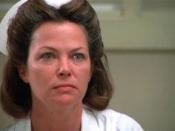Truth is Perception
In the novel, One Flew Over the Cuckoo's Nest, written by Ken Kesey, we see a disturbing society where insanity, and the truth, may or may not be real. We meet characters whom society claims are "insane" and are trying to "adjust" back into the world. The people in this novel struggle with control, conformity, and lack of self-empowerment.
What is truth? If truth is based solely upon one's perception of the actions around him, then that truth is in the eye of the beholder. Chief is an avid believer of this philosophy as he starts his narration with, "But it's the truth even if it didn't happen" (13). Throughout the novel, we see "truth" intertwined with control and normality, all things which lead to a dramatic end.
Society may not approve of something simply because it is not the "norm". The practices that Harding indulges himself in are only considered offensive because society does not actively participate in and encourage them.
The truth for society is that these acts are shameful and that the "culprits" require exclusion. Either one of these truths can easily be defended by seeing the matter through the eyes of one party or the other. The different sides perceive and interpret the acts in different ways, which determine their truths.
Chief Bromden, as an outcast from society, sees society from a different angle than those who experience life within it. Like many things, it is easier to see the truth while on the outside, getting a total view, getting the big picture. This is one of the reasons why Chief is the ideal character for the role of narrator in this novel. He has experienced life inside the "Combine", as he refers to it, and from the outside, as an onlooker...



Excellent
this piece explores any of the themes and symbols in the novel. It is well written and was a sweet help to me. cheers
0 out of 0 people found this comment useful.